Are you yearning for a bedroom that’s as chic as it is peaceful? The right bedroom color scheme can transform your space and evoke feelings of warmth, coziness, and luxury that make you excited to retreat there each night. In this comprehensive guide, we’ll walk you through some of the most inspiring bedroom color schemes for 2025, ranging from soothing neutrals and blues to bold jewel tones and dramatic contrasts.
According to a 2024 survey by the National Sleep Foundation, nearly 78% of people report that their bedroom environment significantly impacts their sleep quality, with color being one of the top influencing factors. Interior designer Amara Wilson explains, “The colors we surround ourselves with while sleeping affect not just our mood but our actual sleep patterns and overall wellbeing.”
Each suggestion in this guide is carefully curated to complement various design styles—whether your preference is sophisticated modernism or cozy rustic charm—helping you create that perfect bedroom sanctuary you’ll love coming home to.
Understanding Color Psychology in Bedroom Design
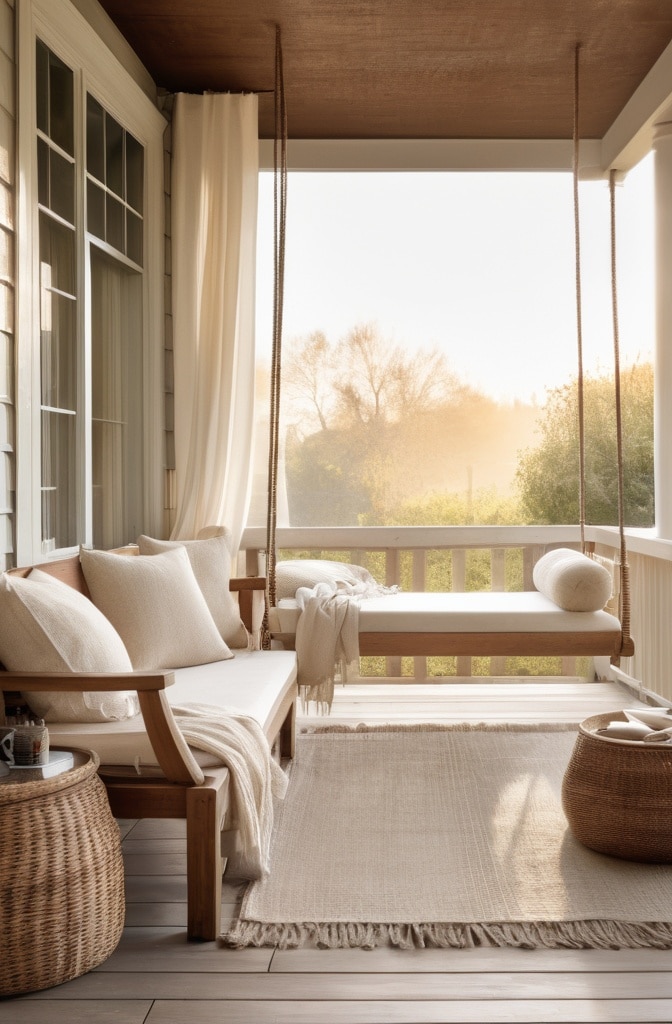
Before diving into specific schemes, it’s worth understanding how colors affect our minds and bodies. Color isn’t just about aesthetics; it has genuine psychological and physiological impacts on us.
Sleep researcher Dr. Marina Kazinski notes, “Certain colors can lower blood pressure and heart rate, creating ideal conditions for restful sleep, while others may stimulate brain activity that interferes with falling asleep.” This science of color psychology should inform your bedroom palette choices.
When selecting your bedroom colors, consider these factors:
- Room size: Lighter colors make spaces feel larger, while darker tones create a more intimate feel
- Natural light: Rooms with abundant sunlight can handle cooler or darker colors, while north-facing rooms benefit from warmer tones
- Ceiling height: Low ceilings appear higher with lighter colors, while high ceilings feel cozier with darker hues
- Personal preference: Above all, choose colors that resonate with you personally—you’ll spend roughly one-third of your life in this space
A 2023 study published in the Journal of Environmental Psychology found that people consistently rate bedrooms in blues, greens, and soft neutrals as most conducive to quality sleep—something to keep in mind as we explore different schemes.
Classic Neutrals for Timeless Elegance
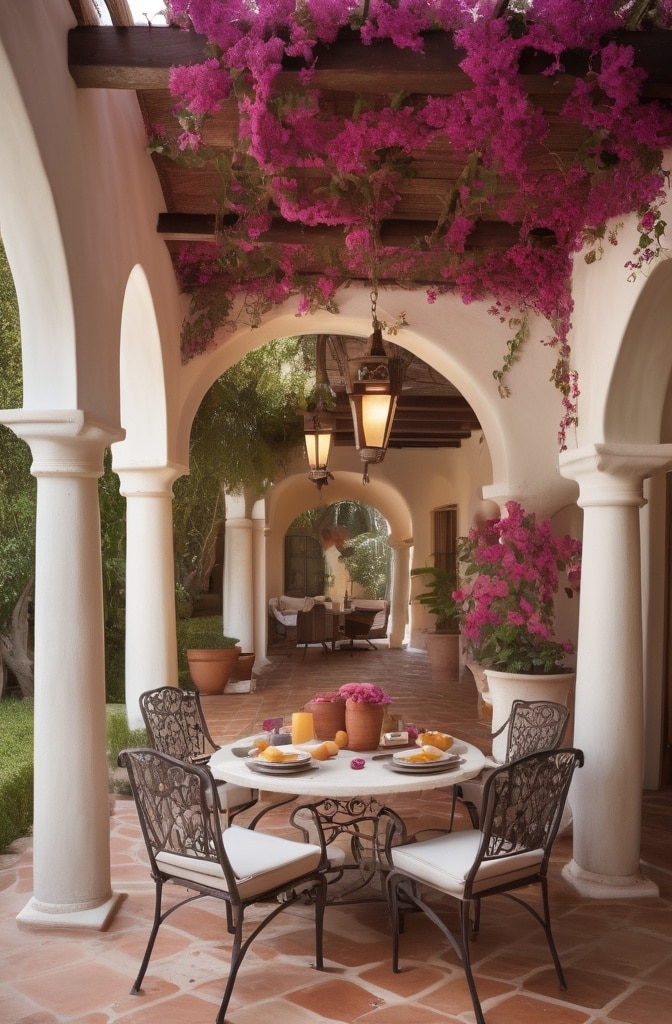
Neutral colors like beige, cream, and soft brown create a sense of calm elegance that never goes out of style. This palette forms the foundation of what designers call “quiet luxury”—understated yet sophisticated.
“Neutrals are the chameleons of interior design,” says design psychologist Dr. James Crawford. “They adapt to changing trends while maintaining a timeless quality that other palettes simply can’t match.”
To create depth with neutrals without making the space feel flat:
- Layer different tones within the same color family
- Incorporate varied textures like linen, wool, and velvet
- Add dimension with subtle patterns in similar shades
- Include natural elements like wood and stone
Walnut furniture pairs beautifully with neutral walls, while a gray headboard and light beige bedding add comfortable sophistication. A few strategically placed lamps in black or metallic finishes provide visual interest without overwhelming the serene atmosphere.
Designer Kate Hallworth of Serene Spaces Interior Design shares, “I recommend Benjamin Moore’s ‘Swiss Coffee’ for walls and ‘Manchester Tan’ for trim—it creates an instant sense of calm that my clients consistently love.”
Soothing Blues for Ultimate Tranquility
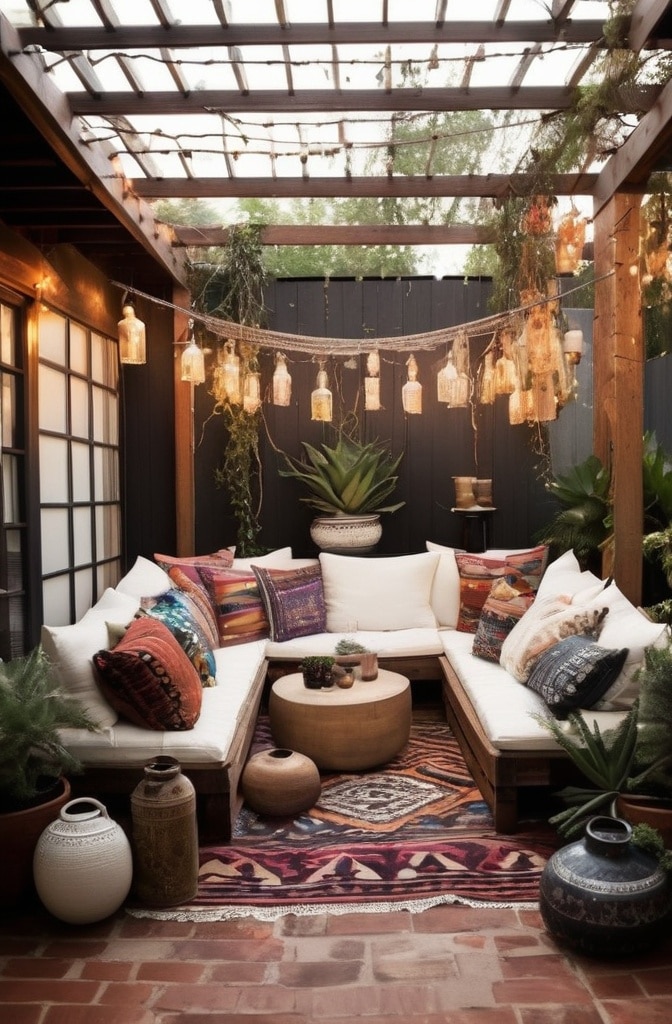
Blue is scientifically proven to lower blood pressure and heart rate, making it the perfect choice for creating a tranquil bedroom retreat. Studies from the University of Sussex found that people who sleep in blue bedrooms get an average of 7.9 hours of sleep per night—the most of any color tested.
“There’s a reason blue has been the most popular bedroom color for over a decade,” explains color specialist Ryan Drake. “It connects us to expansive natural elements like the sky and ocean, inherently calming our nervous systems.”
A medium “origami” blue works wonders for promoting peace and protection. Try pairing blue walls with white or gray accents and soft, diffused lighting to create a genuinely soothing atmosphere. Blue tones are particularly effective in the evening when artificial light is low, enhancing the sense of tranquility as you prepare for sleep.
For maximum effect, consider these blue combinations:
- Soft sky blue with crisp whites for an airy feel
- Navy with silver accents for sophisticated elegance
- Powder blue with natural woods for a Scandinavian-inspired space
- Teal with copper elements for unexpected warmth
This timeless bedroom color scheme subtly evokes the peaceful qualities of water—perfect for washing away the day’s stresses.
Earthy Tones for Grounded Comfort
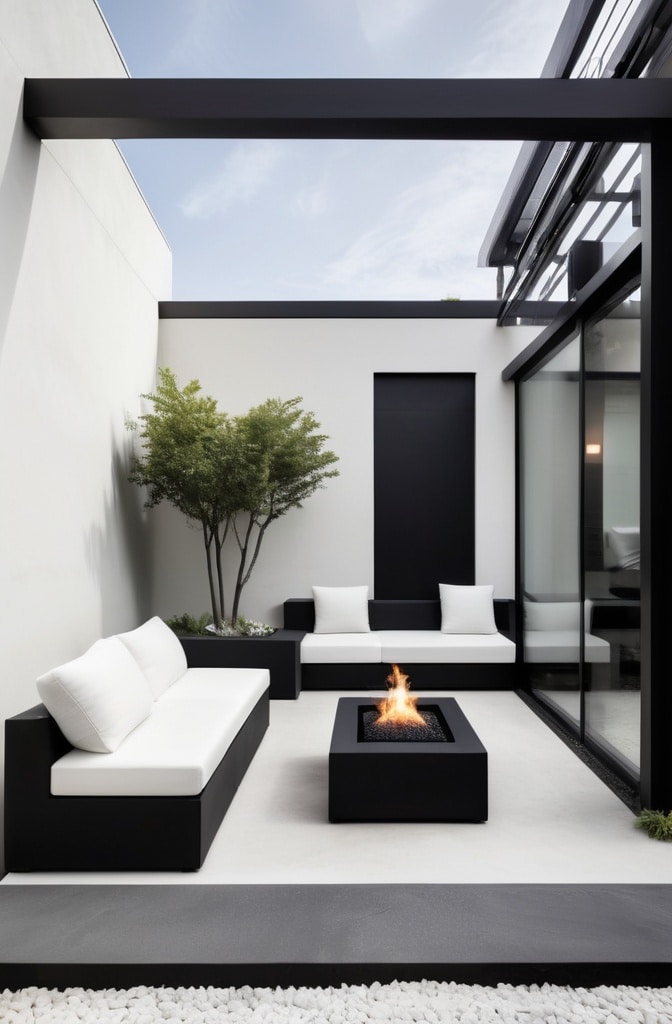
Colors like terracotta, rust, and deep brown bring a warm, clayey feel to your bedroom that instantly creates a cozy, grounding atmosphere. These earth-inspired hues have surged in popularity as people increasingly seek connections to nature in their homes.
Biophilic design expert Tara Wilkinson explains, “Earth tones activate the same neural pathways as spending time in nature—they literally make us feel more rooted and secure, which is exactly what we need in a sleep environment.”
The 2024 Interior Design Trends Report shows a 43% increase in searches for “earth-toned bedrooms” compared to the previous year, confirming this growing desire for natural, grounding spaces.
To bring an earthy, rustic feel to your bedroom:
- Paint walls in warm terracotta or soft clay
- Incorporate natural wood elements with visible grain
- Add texture through woven baskets, pottery, and raw fabrics
- Include plants with sculptural qualities like snake plants or olive trees
- Use the soft glow of amber-tinted lighting
With natural wood accents, cozy throws, and warm-toned lamps, you’ll create that enveloping feeling of being held by the earth itself—the perfect environment for deep, restorative sleep.
Soft Pastels for Gentle Dreamscapes
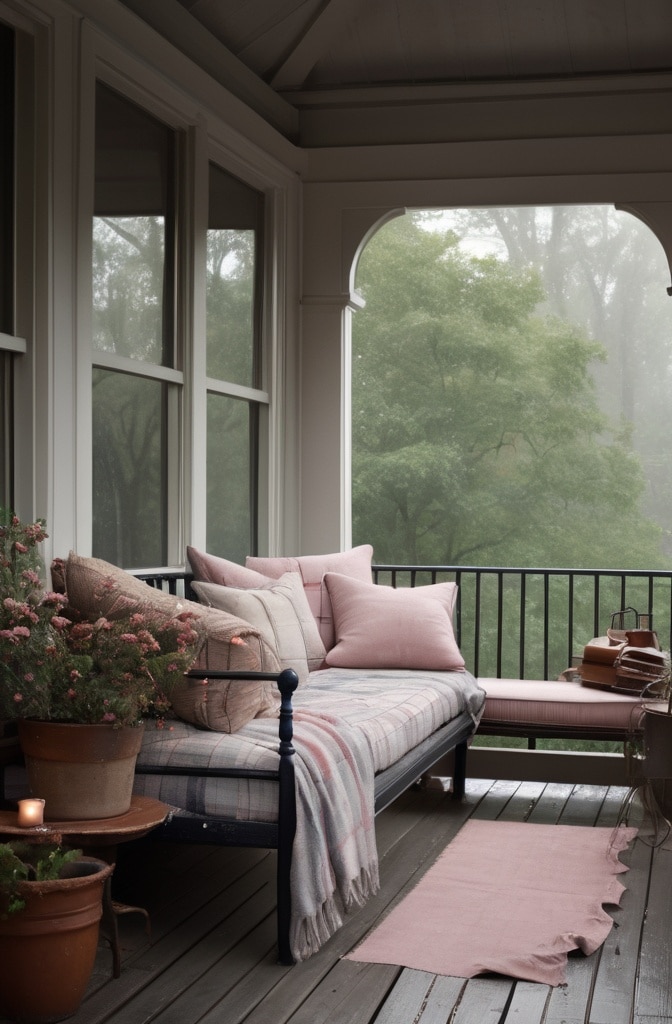
Pastel colors give the bedroom a soft, dreamy quality that’s perfect for creating a gentle retreat. While pastels are often associated with nurseries or children’s rooms, contemporary applications have elevated them to sophisticated status in adult bedrooms as well.
“The key to modern pastel bedrooms is unexpected combinations,” advises interior stylist Nina Rodgers. “Pair soft lavender with concrete elements, or baby blue with industrial metal accents—this prevents the space from feeling juvenile.”
Choosing a palette of pale pinks, soft blues, and muted lavenders gives walls a ethereal quality and infuses the room with subtle charm. Keep bed linens in creamy tones to complement light wooden furniture, creating a cohesive look that feels intentional rather than overly sweet.
What makes pastels particularly effective in bedrooms is their light-reflective properties—they bounce natural daylight beautifully, making the space feel larger and more luminous. At night, they create a gentle backdrop that doesn’t compete with restfulness.
Scandinavian designers have long understood this balance, often using pastels as a “new neutral” base for creating serene, minimalist spaces that feel both fresh and timeless.
Elegant Grays for Contemporary Sophistication
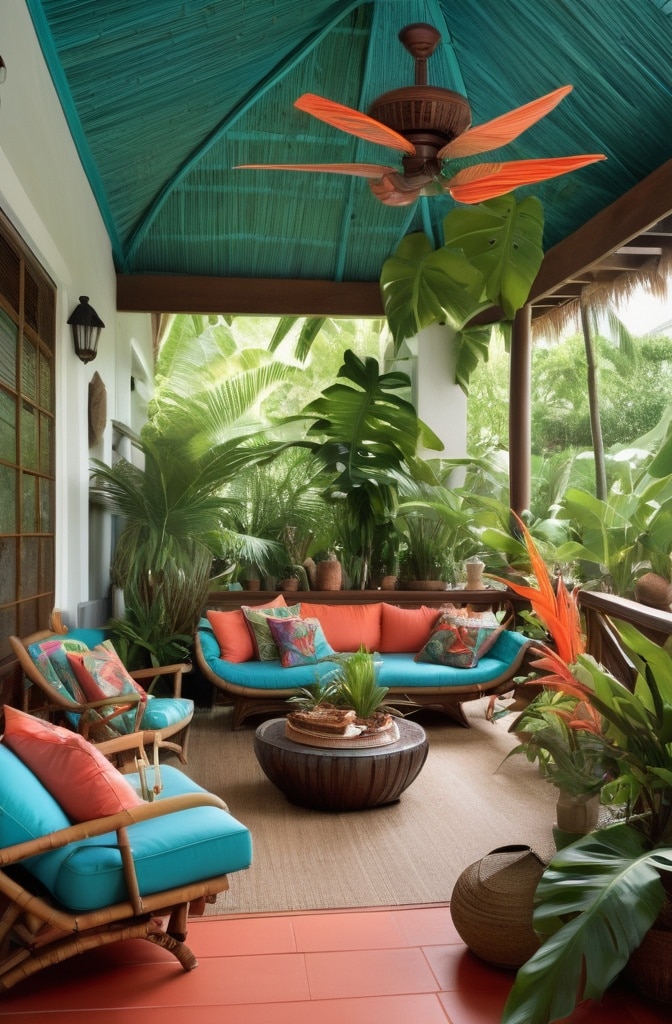
Gray has emerged as one of the most popular bedroom colors for those who value elegance and sophistication. This versatile neutral creates a perfect backdrop for almost any design style, from minimalist to traditional.
“The beauty of gray lies in its undertones,” explains color consultant Emily Winters. “A blue-gray creates a completely different feeling than a greige with warm undertones—understanding this subtlety is key to successful gray bedrooms.”
Light to medium shades of blue-gray on walls pair beautifully with white or off-white bedding, while black accents provide necessary contrast that prevents the scheme from feeling flat. Consider these approaches to gray:
- Warm greiges (gray + beige) for cozy comfort
- Cool blue-grays for a more contemporary feel
- Charcoal for dramatic impact when used as an accent
- Silver-grays for a touch of subtle glamour
According to paint manufacturer Sherwin-Williams, gray paint continues to dominate bedroom color sales, with their “Repose Gray” remaining one of their top-selling colors for five consecutive years.
For a truly sophisticated gray bedroom, texture becomes essential—incorporate velvet, boucle, and other tactile elements to add dimension and visual interest to this monochromatic palette.
Romantic Reds and Pinks for Passionate Retreats
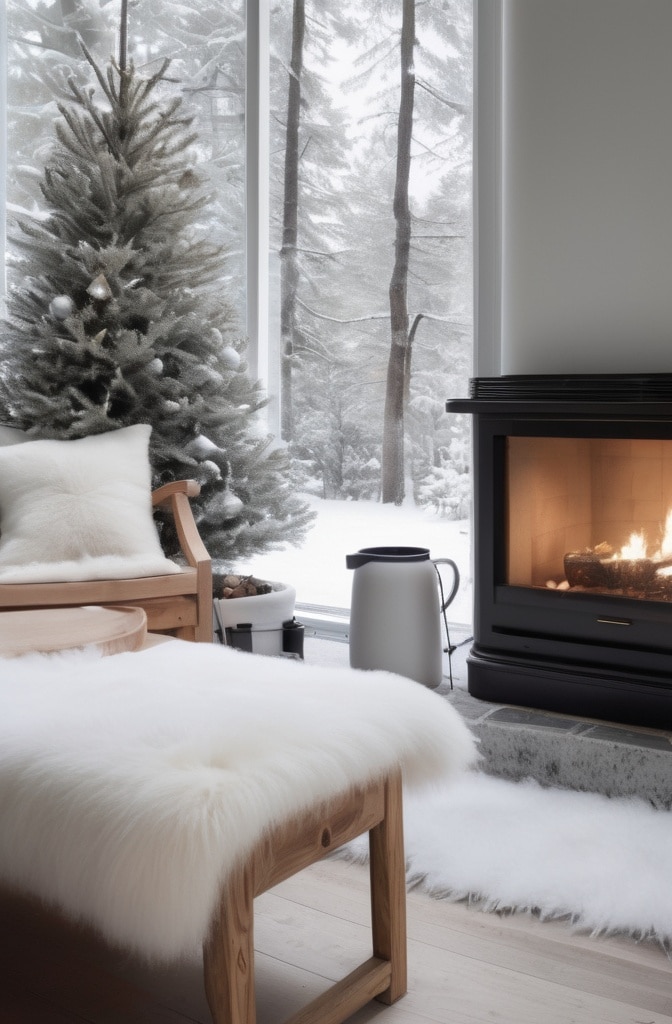
For those seeking a more passionate and romantic bedroom atmosphere, deep reds and pinks add warmth and intimacy. These colors stimulate conversation and connection, making them ideal for primary bedrooms shared by couples.
“Red has gotten a bad reputation in bedrooms because people often choose shades that are too bright,” notes color psychologist Dr. Samantha Drew. “The secret is selecting muted, dusty reds that energize without overstimulating.”
Use pale pink on walls to create a gentle backdrop, then incorporate deeper reds in cushions, artwork, or a statement chair to establish balance. This color palette works beautifully in rooms with abundant natural light, as it prevents the space from feeling too heavy or dark.
To create a romantic bedroom without going overboard:
- Choose dusty, muted versions of red and pink rather than bright, primary shades
- Balance warm colors with cooling neutrals
- Incorporate luxurious textures like silk and velvet
- Keep lighting warm but adjustable—dimmers are essential
- Add metallic accents in rose gold or copper for subtle glamour
This approach creates a private, cozy retreat that feels passionate yet still conducive to restful sleep—striking that perfect balance between energy and tranquility.
Bold Black and White for Dramatic Contrast
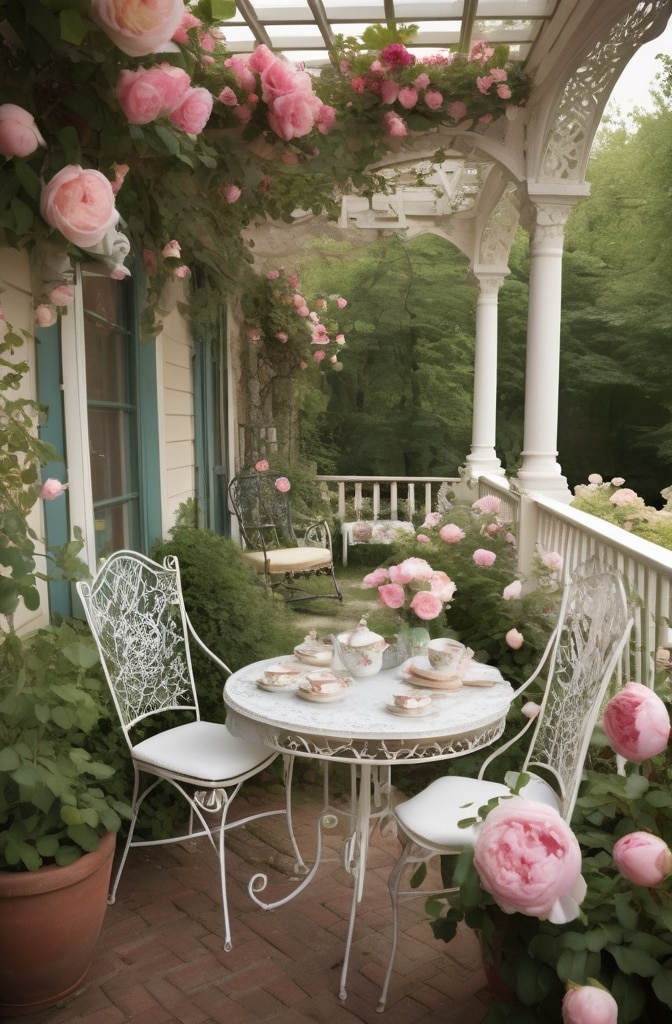
Crisp black and white combinations create stunning, contemporary bedrooms with timeless appeal. This high-contrast palette makes a bold statement while remaining versatile enough to adapt to changing accessory trends.
According to the Pinterest Predicts 2025 report, searches for “high contrast bedrooms” increased by 87% last year, with black and white leading the way. This dramatic look appeals to those who appreciate architectural simplicity and graphic impact.
“The success of black and white bedrooms depends entirely on proportion,” advises architect Maria Sanchez. “Too much black can feel oppressive, while too much white can feel sterile—finding balance is essential.”
Creating rhythm with balanced black and white elements:
- Use white as the dominant color (60-70% of the space)
- Add black in architectural elements and furniture (20-30%)
- Incorporate gray as a transitional tone (10-15%)
- Include one or two metallic elements for dimension
This clean-lined style perfectly suits those who love minimalist aesthetics but still want visual drama in their bedroom. The beauty of this scheme lies in its simplicity—you don’t need many elements to create high impact, making it ideal for both small and large bedrooms.
Warm Yellows for Sun-Drenched Sanctuaries
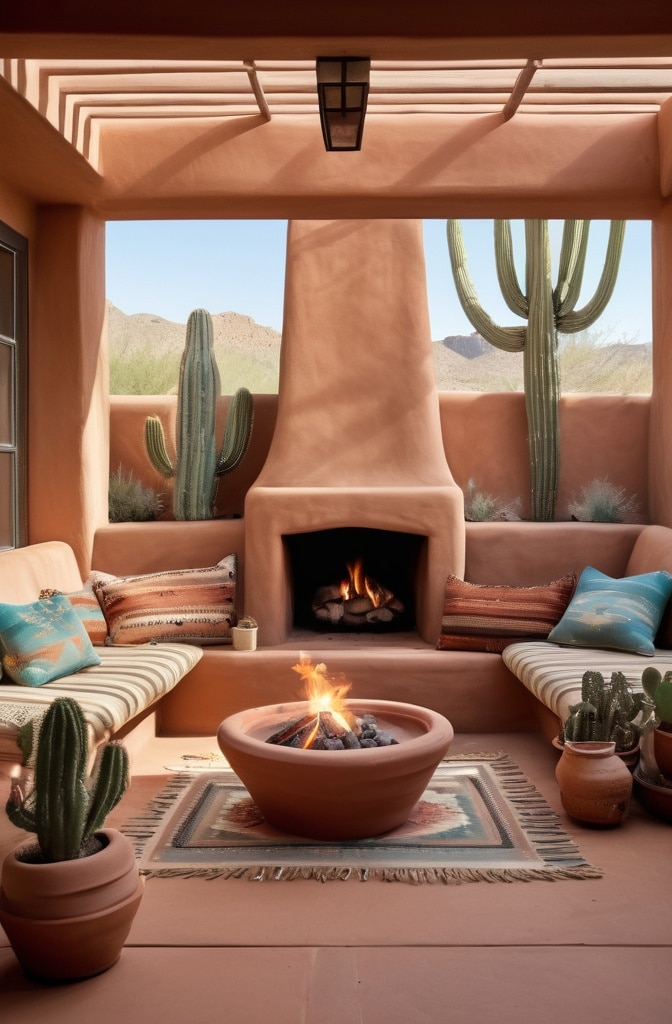
If you crave a bright, cheerful bedroom atmosphere, yellow infuses the space with warmth and positive energy. Color psychology studies consistently link yellow with optimism, clarity, and confidence—making it ideal for morning people who want to wake up energized.
“Yellow bedrooms work best when they face east or west,” recommends architectural color consultant Li Wei. “This allows the room to capture golden hour light that enhances the walls’ warmth during key times of the day.”
For a sunny, inviting bedroom:
- Choose buttery, soft yellows rather than bright primary tones
- Pair with white trim and light wooden furniture
- Balance with cooling gray or blue accents
- Use plants and natural elements to ground the space
- Keep window treatments light and airy to maximize natural light
Yellow particularly excels at making small bedrooms feel more spacious and optimistic. Its reflective qualities bounce light around the room, creating an expansive feeling even in compact spaces.
Designer Jonathan Peters shares, “For clients who struggle with seasonal mood changes, I often recommend yellow bedroom accents that can help counteract winter blues—particularly in northern climates with limited daylight hours.”
Peaceful Greens for Nature-Connected Spaces
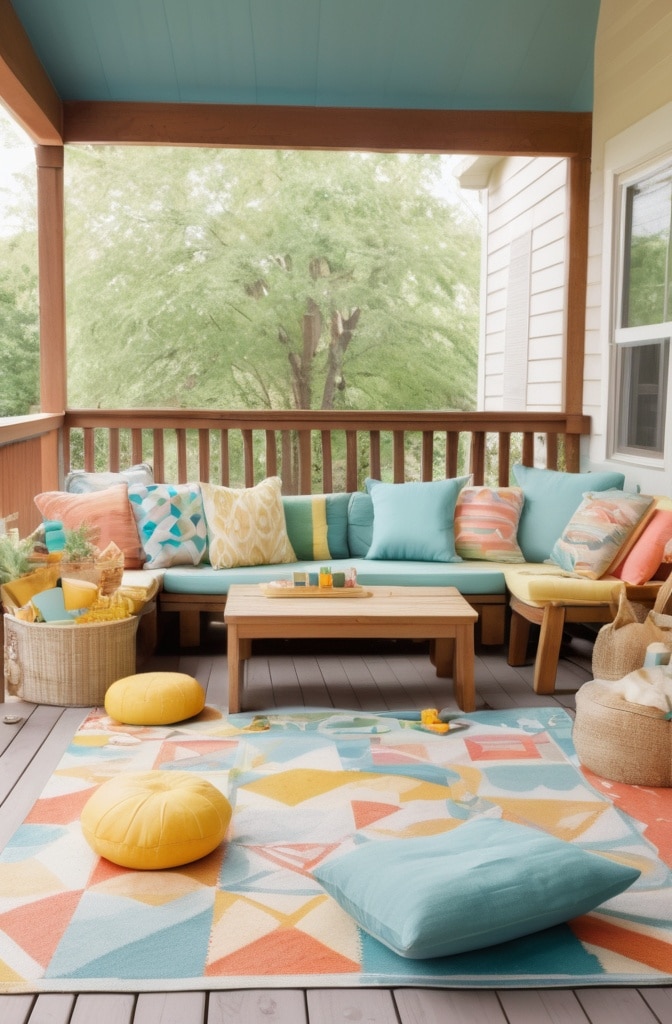
Green connects us directly to nature, making it an excellent choice for creating restorative bedroom retreats. Research from the Human Spaces Global Report shows that incorporating biophilic elements like green color schemes can reduce stress, enhance creativity, and improve wellbeing.
“Green is the most balanced color in the spectrum,” explains biophilic design consultant Maya Rodriguez. “It sits in the middle of cool and warm tones, creating an instant sense of equilibrium that’s perfect for sleep environments.”
Try olive or sage green walls combined with natural wood accents and potted plants to create a serene, grounded space. These earthy, contemporary tones excel at creating relaxing environments that bring the outdoors in.
To enhance the effectiveness of a green bedroom:
- Include multiple plant species for air purification
- Choose organic bedding materials like linen or cotton
- Incorporate natural woods with visible grain
- Use stones, ceramics, and other earth elements as accents
- Maximize natural light when possible
The versatility of green allows it to work equally well in traditional, modern, or eclectic bedroom designs, adapting to your personal style while maintaining its connection to the natural world.
Cool Grays and Blues for Urban Retreats
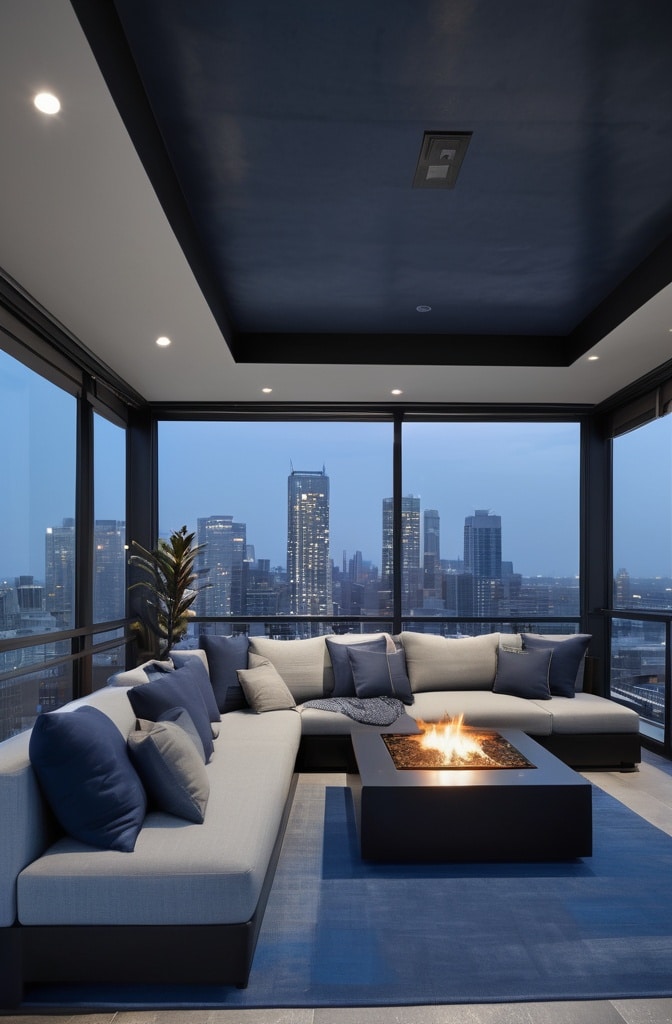
The combination of gray and blue creates a trendy yet urbane ambiance perfect for city dwellings. This sophisticated palette evokes the energy of urban landscapes while maintaining the serenity needed for restful sleep.
“Urban bedrooms face unique challenges—noise, light pollution, and often limited space,” notes city apartment specialist Devon Chang. “Cool color schemes help counteract these issues by creating visual quiet that balances busy city energy.”
For a sleek, stylish urban bedroom:
- Try a dark blue accent wall paired with gray furniture
- Add white bedding for crisp contrast and visual lightness
- Incorporate sound-absorbing elements like upholstered headboards
- Use blackout window treatments in coordinating colors
- Select streamlined furniture with clear, architectural lines
This harmonious color combination excels at making bedrooms feel both contemporary and calming—ideal for creating sanctuary spaces within busy urban environments.
The 2024 Apartment Therapy Color Report found that urban dwellers consistently rate blue-gray combinations as their preferred bedroom palette, citing their ability to create psychological distance from city stress.
Minimalist Whites for Clean Rejuvenation
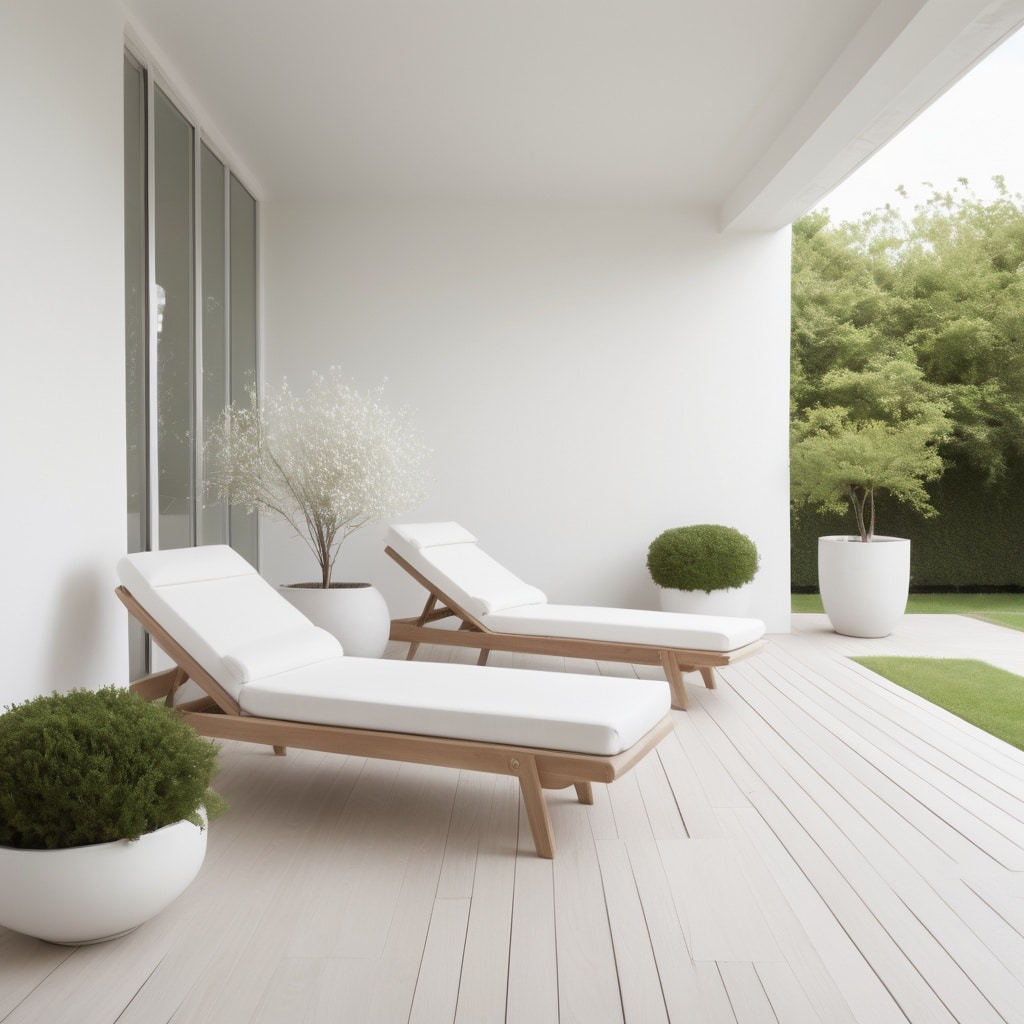
A clean, refreshing minimalist style emerges from thoughtfully designed white spaces accented with soft grays or beiges. White walls create an immediate sense of spaciousness and airiness, while careful additions of texture prevent the room from feeling clinical or stark.
“The most common mistake with white bedrooms is under-accessorizing,” says minimalist design expert Sarah Williams. “Successful white spaces require deliberate layering of textures and tonal variations to create depth and interest.”
To create a minimalist white bedroom that feels welcoming rather than sterile:
- Layer different white tones (creamy, bright, and off-white)
- Incorporate natural materials like linen, cotton, and wool
- Add warmth through light wood elements
- Include subtle patterns through textiles
- Maintain simplicity in silhouettes and arrangements
Walnut furniture or light woods add essential warmth, while a gray headboard contributes depth without compromising the overall neutrality. This approach maintains clean minimalism while ensuring the space feels like a home rather than a hotel room.
According to lighting experts, white bedrooms benefit from layered lighting options that can shift from bright and energizing to soft and ambient, allowing the space to transition seamlessly from morning to evening.
Moody Dark Tones for Intimate Luxury
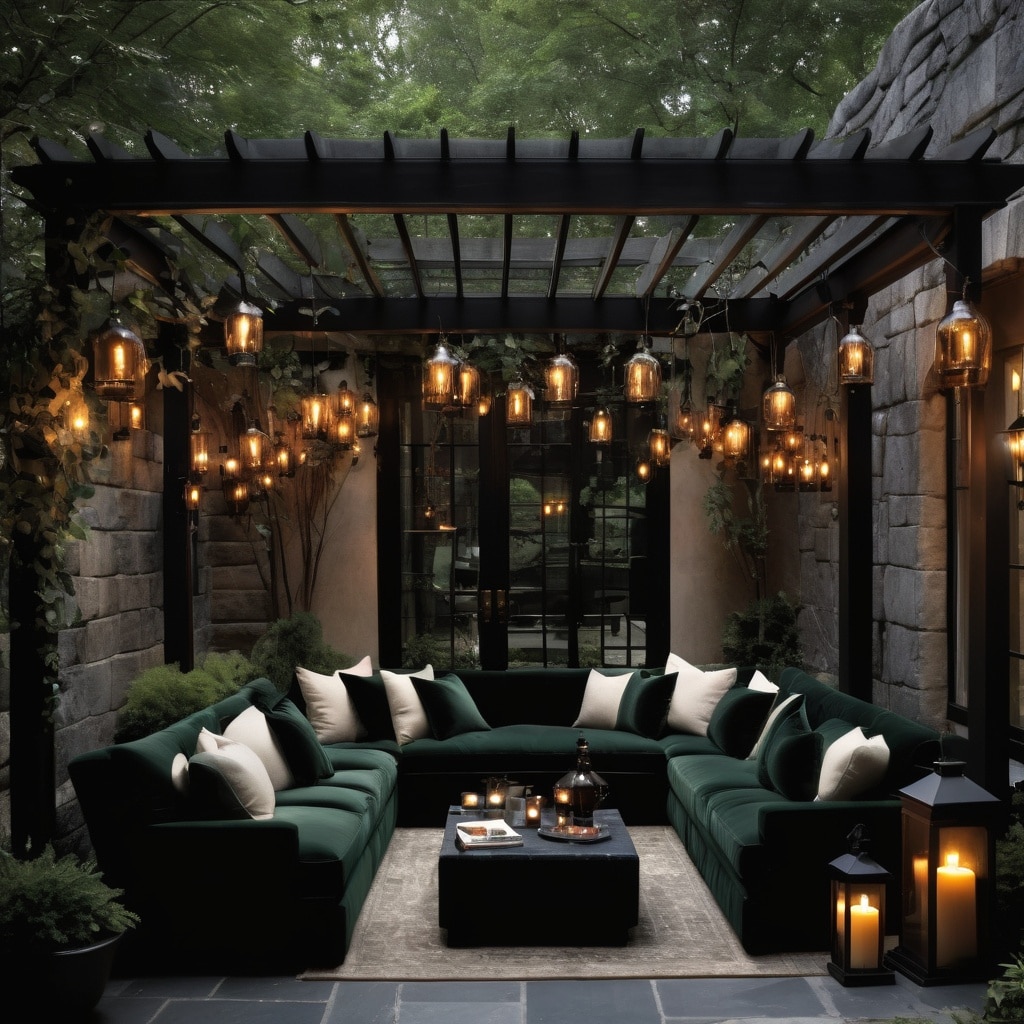
Dark, moody colors such as charcoal, navy, or deep forest green create luxuriously intimate bedrooms with cocoon-like comfort. Contrary to popular belief, dark bedrooms can actually enhance sleep quality by minimizing visual stimulation and creating psychological enclosure.
“We’re seeing a significant shift toward embracing darker bedrooms,” reports interior trend forecaster Nicole Hampton. “People are recognizing that these colors can create a sense of protection and envelopment that’s deeply comforting.”
For a rich sensory experience:
- Paint walls in saturated dark tones
- Layer soft textiles like velvet and satin
- Use warm lighting with golden undertones
- Add metallic accents in brass or gold
- Incorporate glossy elements to reflect light
Sleep specialist Dr. Aaron Chen explains, “Dark-walled bedrooms can actually signal to the brain that it’s time for rest, potentially helping those who struggle with sleep onset issues.”
The key to successful dark bedrooms lies in balance—incorporate adequate lighting options, reflective surfaces, and lighter textiles to prevent the space from feeling oppressive. When executed correctly, a dark bedroom creates an immediate sense of luxury while promoting the deep rest we all crave.
Vibrant Jewel Tones for Expressive Statements
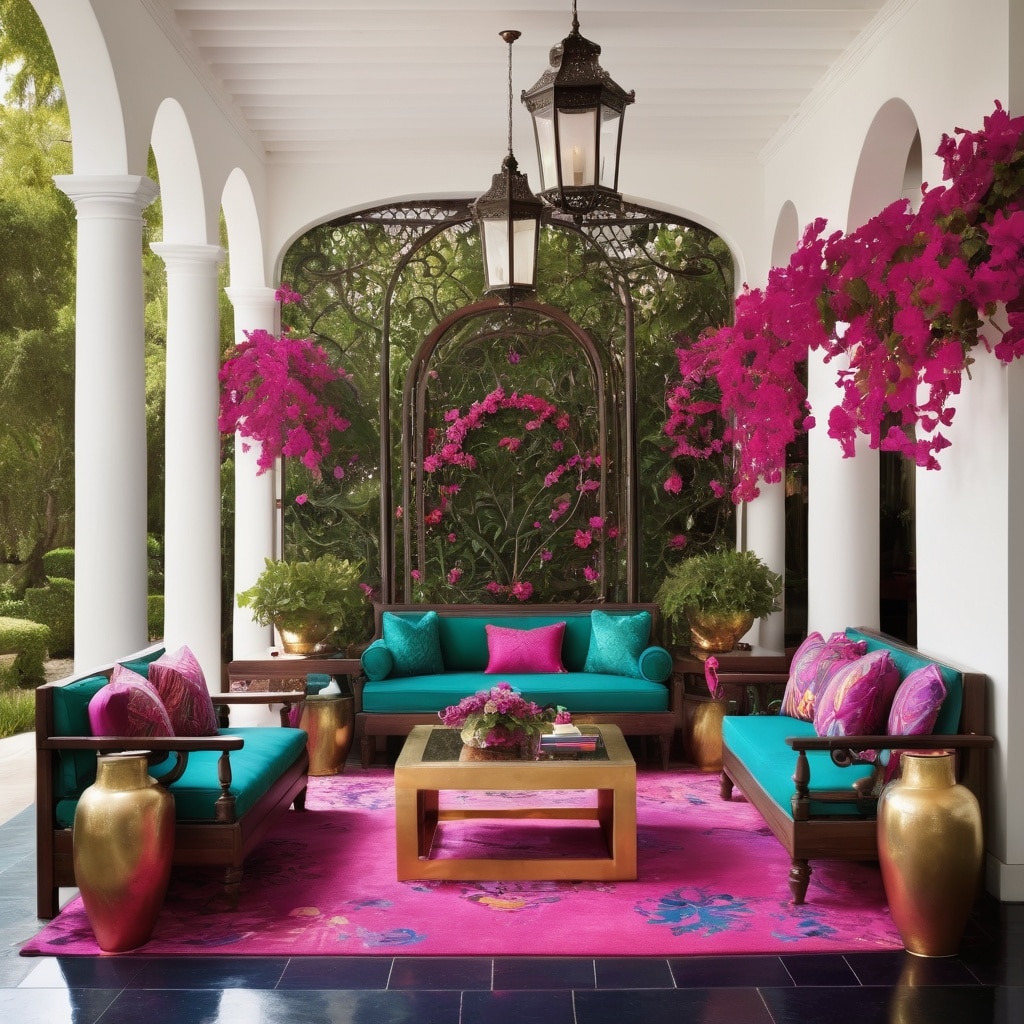
Using jewel tones such as emerald green, sapphire blue, and deep ruby brings vitality and personality to bedroom designs. These rich, saturated colors create spaces with character and depth that express individual identity.
“Jewel tones have historically been associated with wealth and abundance,” explains design historian Dr. Melissa Kwan. “They carry cultural weight that immediately elevates a space, making even simple rooms feel curated and intentional.”
According to the 2025 Color Trend Forecast, jewel tones are experiencing a major resurgence, with emerald green leading the trend in bedroom design specifically.
To incorporate jewel tones effectively:
- Choose one dominant jewel color as an accent wall or statement piece
- Balance with neutral tones like cream, tan, or gray
- Add metallic elements that enhance the gem-like quality
- Keep larger furniture pieces simple to prevent visual competition
- Use textiles strategically to distribute color throughout the space
This approach creates a bedroom that feels confident and charismatic while maintaining the restfulness needed for sleep. Jewel tones work particularly well in bedrooms with good natural light, as they reveal subtle variations in their rich hues throughout the day.
Soft Lavender and Lilac for Aromatic Inspiration
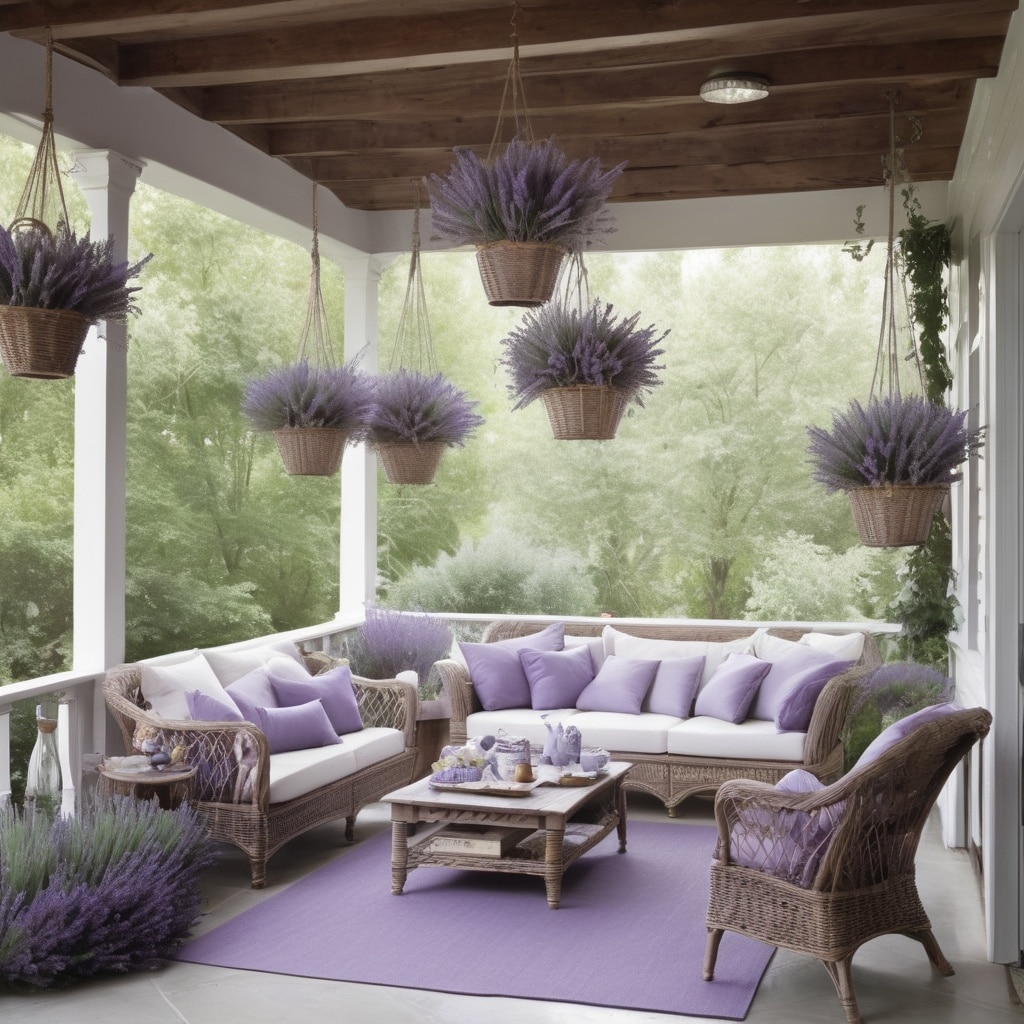
Lavender and lilac create peaceful, tranquil bedrooms with subtle connections to aromatherapy benefits. These soft purple hues have historically been associated with relaxation and sleep enhancement, making them natural choices for restful spaces.
“There’s a fascinating connection between lavender as a color and as a scent,” notes aromatherapy specialist Rebecca Morris. “Our brains create associations between the visual experience of the color and the calming properties of the herb itself.”
For an airy, soothing lavender bedroom:
- Paint walls in pale lavender
- Combine with white or light gray bedspreads
- Add natural light-filtering window treatments
- Incorporate touchable textures through rugs and pillows
- Consider actual lavender plants or dried lavender bundles for multisensory experience
This combination particularly excels in creating tranquil sleep environments. Research from the Sleep Foundation suggests that exposure to purple hues may help regulate circadian rhythms, potentially supporting more regular sleep patterns.
Modern lavender bedrooms move beyond traditional femininity through contemporary furniture choices and unexpected accent colors like charcoal or bronze, creating sophisticated spaces that appeal to diverse tastes.
Rustic Browns and Beiges for Farmhouse Warmth
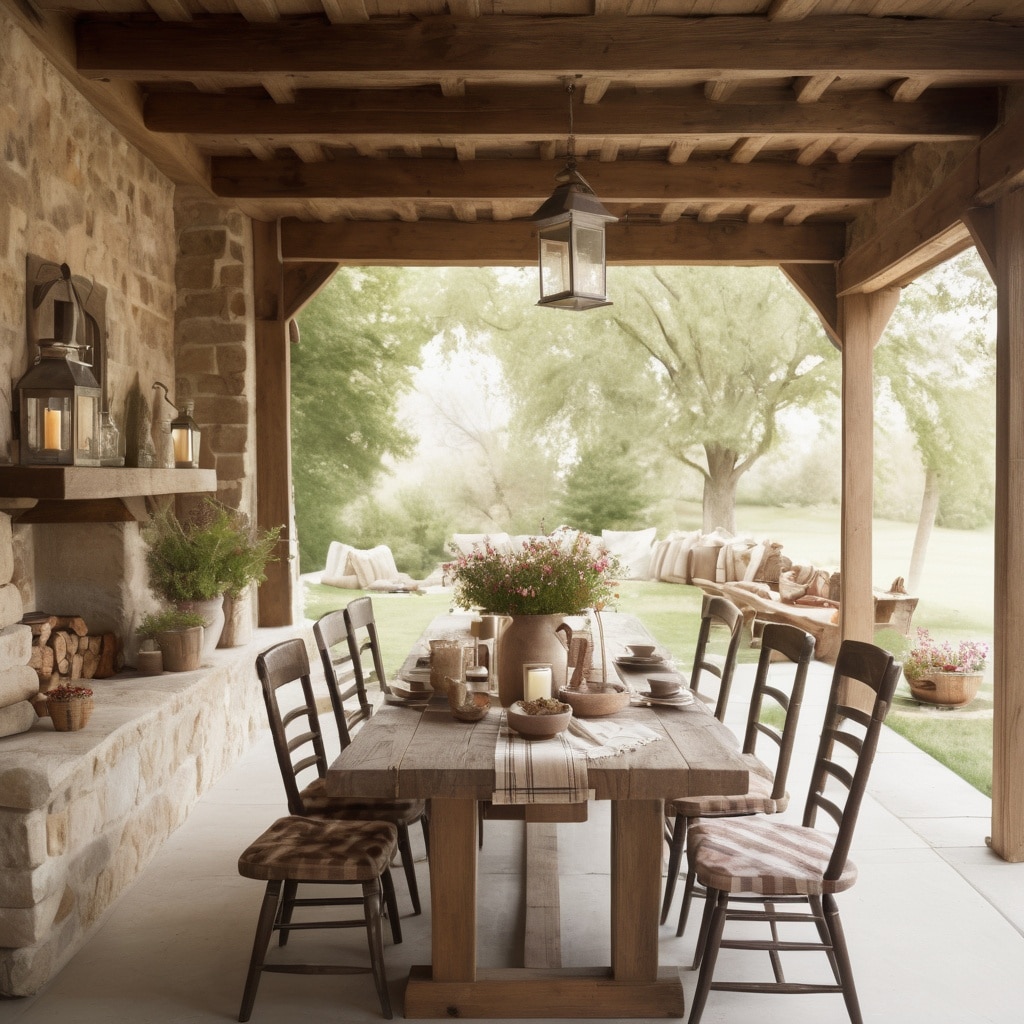
Brown and beige tones add undeniable warmth and comfort to bedrooms with farmhouse or rustic aesthetics. These colors connect directly to natural materials, creating authentic, grounded spaces that feel established and timeless.
“The modern farmhouse look isn’t just a trend—it’s a return to fundamental design principles that prioritize comfort, function, and connection to place,” explains rural design specialist Thomas Hendricks.
For a warm, rustic bedroom atmosphere:
- Paint walls a pale beige or warm tan
- Incorporate reclaimed or distressed wooden furniture
- Mix textures like linen, raw cotton, and wool
- Add woven baskets and natural fiber elements
- Include vintage or antique pieces with history and patina
This approach creates warm, rustic spaces with an earthy, grounded quality. According to a recent consumer survey, farmhouse-inspired bedrooms rank among the most “emotionally comfortable” design styles, with respondents citing their authentic, unpretentious quality as the primary appeal.
Designer Emma Lewis notes, “The secret to a successful modern farmhouse bedroom is restraint—incorporate rustic elements thoughtfully rather than filling the space with clichéd decor that feels inauthentic.”
Energetic Coral and Peach for Joyful Mornings
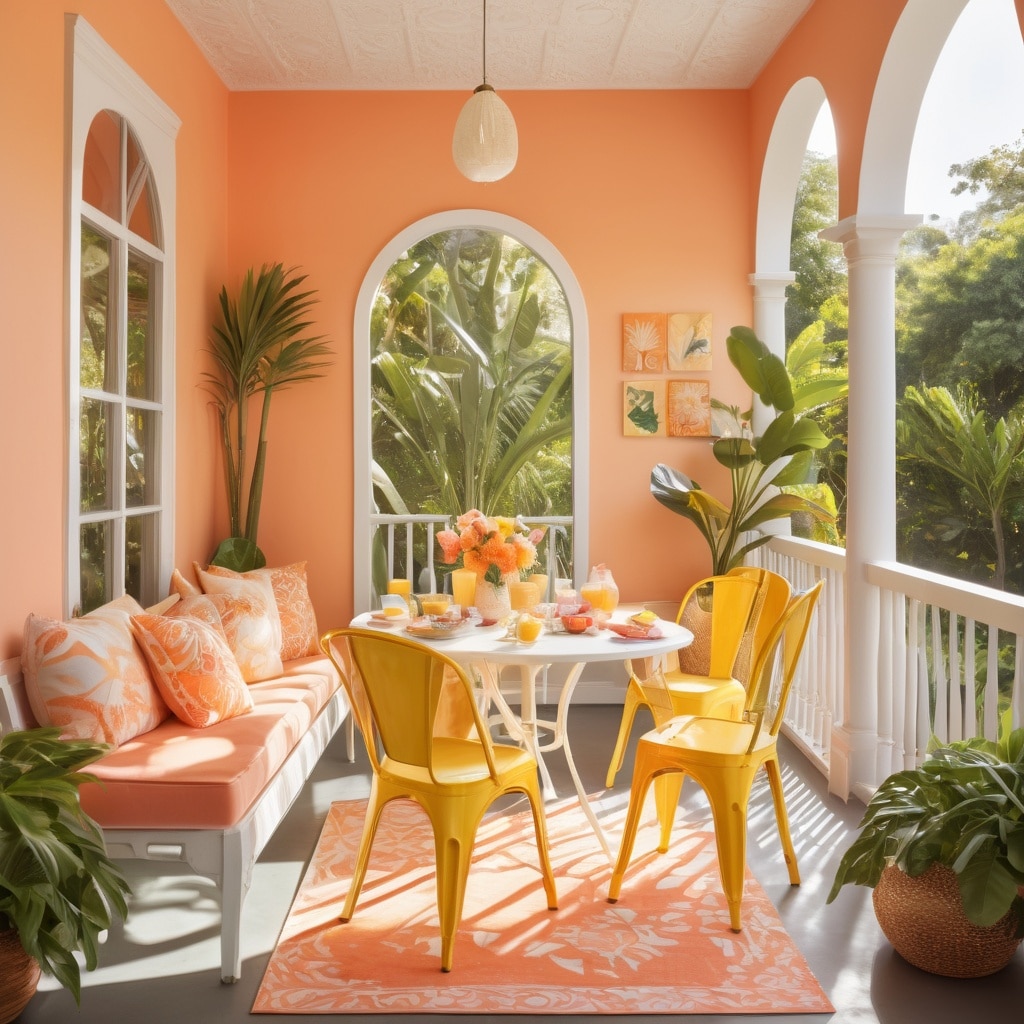
Coral and peach create bedrooms filled with vitality and joy, perfect for those who want their sleeping space to energize as well as relax. These warm, happy colors have been linked to increased optimism and creativity—ideal for morning people who wake ready to embrace the day.
“Coral works beautifully in bedrooms because it flatters all skin tones,” shares makeup artist turned color consultant Ava Chen. “It creates a subtle glow effect that feels immediately uplifting and personal.”
Use coral in cushions or bedding elements and combine with soft peach walls for a focused yet gentle effect. The furniture palette should stay predominantly white or neutral, with perhaps a few accent pieces in a complementary blue to balance the warmth.
To maximize the positive effects of coral and peach:
- Place these colors where morning light will enhance them
- Pair with plants that have warm-toned foliage
- Balance with cooling whites to prevent overstimulation
- Include natural materials that complement the warm palette
- Consider dimmable lighting for evening wind-down time
These energetic tones create bedrooms that help ease the transition from sleep to wakefulness, potentially supporting healthier morning routines and more consistent energy throughout the day.
Read This Blog: https://hometranquil.com/kitchen-color-ideas/
Deep Navy and Gold for Classic Glamour
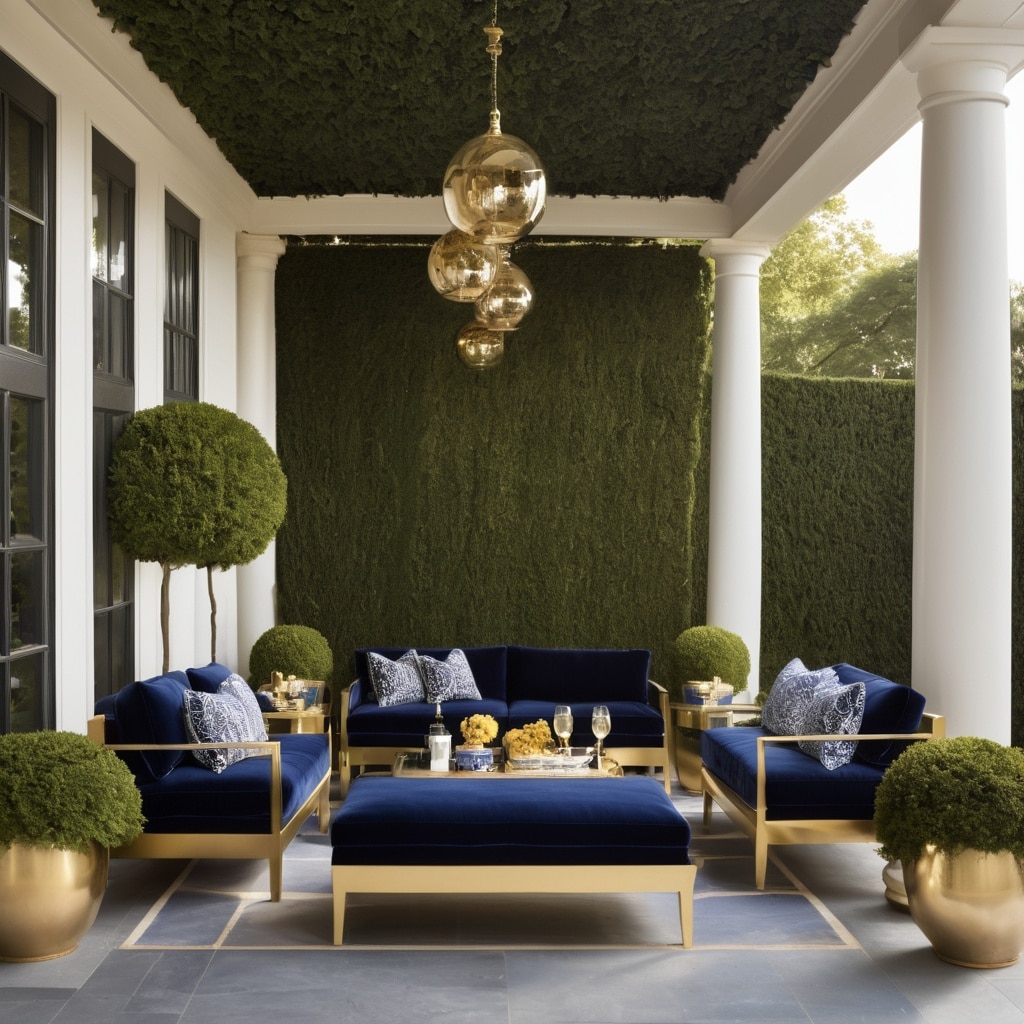
Navy and gold paired together create an elegant, luxurious bedroom aesthetic with timeless appeal. This combination has historical roots in royalty and nautical traditions, lending it both sophistication and versatility.
“Navy functions as a neutral that’s more interesting than black or gray,” explains color strategist Michael Kim. “When paired with gold, it creates a balance of masculine and feminine energies that appeals to diverse tastes.”
The walls can showcase the statement color of navy, or navy can appear in substantial furniture pieces, while gold touches in lamps, frames, and hardware add necessary warmth and reflection.
For a successfully glamorous navy and gold bedroom:
- Use navy strategically—either as an accent wall or in major furniture
- Incorporate varied gold finishes (brushed, polished, antiqued)
- Balance with white or cream to prevent heaviness
- Add glass or mirror elements to enhance light reflection
- Consider velvet or silk textiles to enhance the luxurious feel
This sumptuous combination excels in creating sophisticated, contemporary bedrooms with enduring appeal. Navy provides the perfect backdrop for showcasing personal accessories and art, while gold elements add the touch of luxury that makes the space feel special and intentional.
Chic Black Accents for Modern Edge
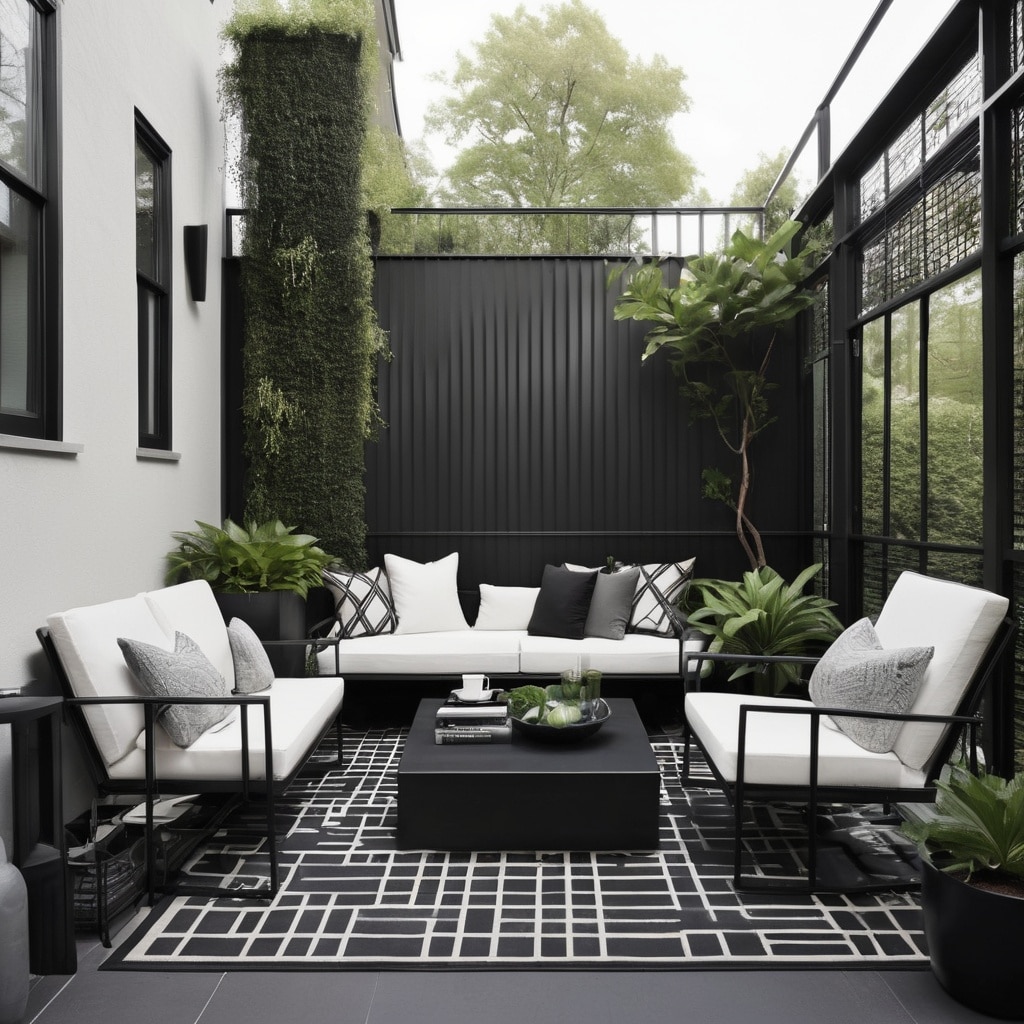
Black accents bring cool, contemporary flair to bedrooms without overwhelming the space. Think black picture frames, lighting fixtures, or a statement headboard against white or gray walls for maximum impact.
“Black is the punctuation mark of interior design,” says modernist designer Javier Mendez. “It creates immediate definition, drawing the eye exactly where you want attention focused.”
This sharp, defined look feels thoroughly modern while remaining highly adaptable. The beauty of black accents lies in their ability to create visual anchor points that give the eye places to rest, preventing spaces from feeling chaotic or undefined.
For effective use of black accents:
- Limit black to 10-20% of the overall color scheme
- Distribute black elements evenly throughout the space
- Choose matte black for a softer look, glossy for drama
- Pair with varied textures to prevent starkness
- Use black to frame views or highlight architectural features
This approach works exceptionally well for those who appreciate monochromatic, minimalist styles while still wanting visual interest. It allows for personal expression without commitment to overwhelming color, making it perfect for those who value simplicity with edge.
Warm Wood Tones for Organic Harmony
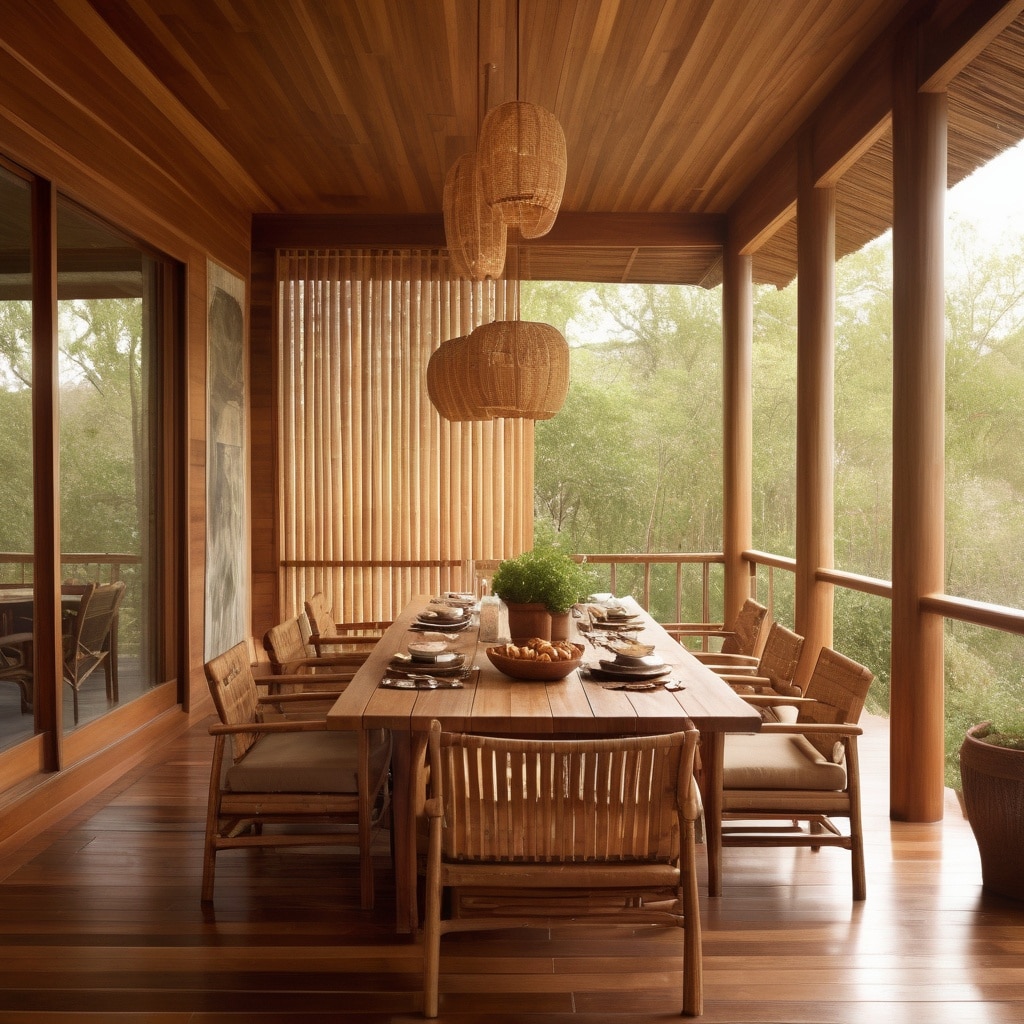
Warm wood tones create bedrooms with a friendly, natural atmosphere that instantly feels welcoming. Wood connects us to nature even in urban environments, creating visual warmth that translates to psychological comfort.
“There’s something deeply primal about our response to wood in interior spaces,” explains environmental psychologist Dr. Jennifer Wade. “Studies show that visible wood grain can actually lower blood pressure and stress hormones—exactly what we want in a sleep environment.”
To create a wood-centered bedroom:
- Combine off-white walls with light or medium-toned wooden furniture
- Mix different wood species for textural interest
- Add touches of beige or soft brown in textiles
- Incorporate plants that complement the wood tones
- Use natural fiber rugs and window treatments
This color palette excels at creating tranquil spaces with strong connections to the natural world. According to sustainable design experts, rooms with prominent wood elements typically score higher on wellbeing assessments than those without, regardless of overall style or other color choices.
The warmth of wood creates an immediate sense of sanctuary, making it particularly effective in bedrooms where comfort and relaxation are paramount.
Ethereal Whites and Creams for Serene Sanctuaries
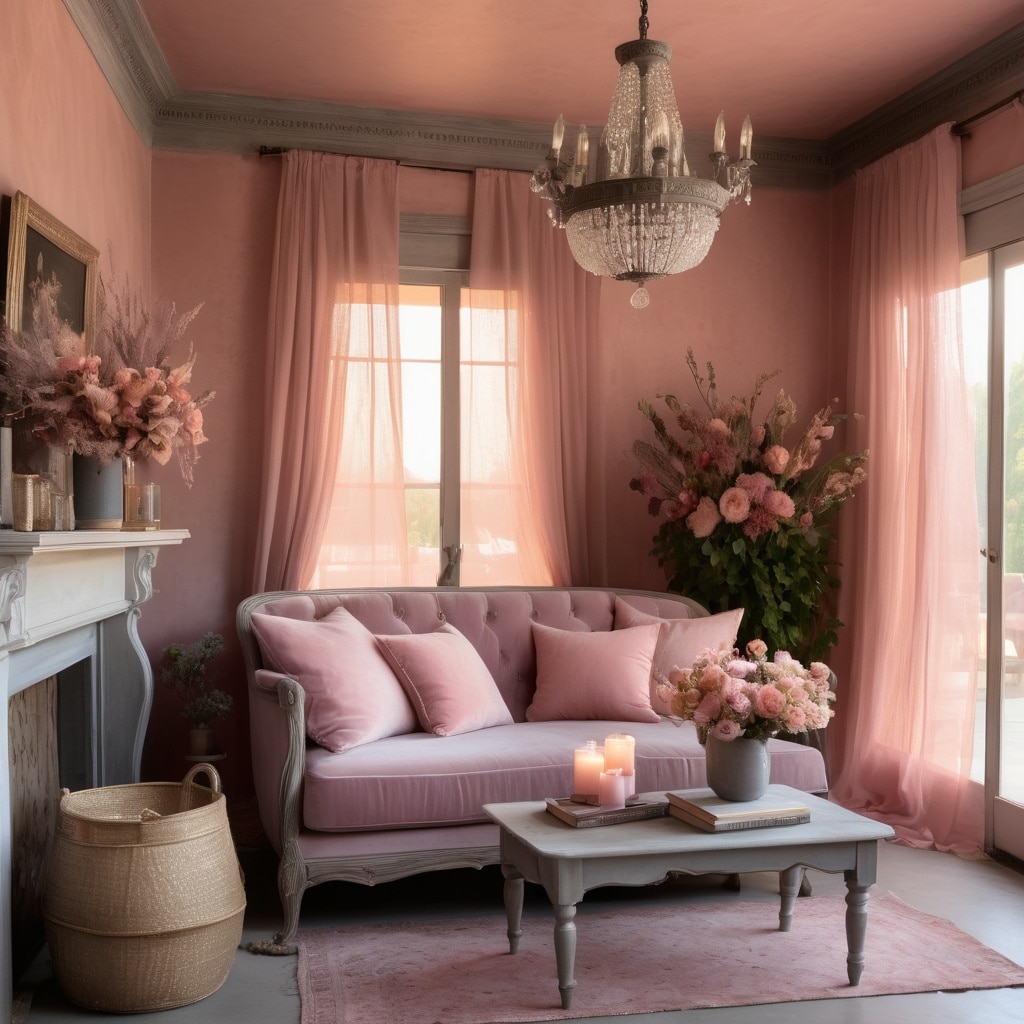
Whites and creams transform bedrooms into calm, dreamy retreats with an almost ethereal quality. These seemingly simple colors create spaces with tremendous sensory richness when approached thoughtfully.
“White is never just white,” explains sensory design expert Olivia Parker. “It contains countless subtle variations that our eyes perceive as texture and depth, creating spaces that feel alive rather than flat.”
Pair cream walls with white or cream bedding for a soft, light-filled space. Introduce varied textures through a shag rug, linen curtains, or knitted throws to create tactile interest that prevents the monochromatic palette from feeling one-dimensional.
White bedrooms excel at:
- Reflecting and maximizing natural light
- Creating psychological spaciousness
- Providing visual quiet for busy minds
- Showcasing architectural features
- Adapting to seasonal decor changes without clashing
This simple yet elegant approach offers the perfect solution for those seeking peace and quiet in their personal retreat. White’s reflective properties can also help regulate temperature, keeping spaces cooler in summer—an added benefit for sleep quality.
Dusky Pinks and Grays for Subtle Romance
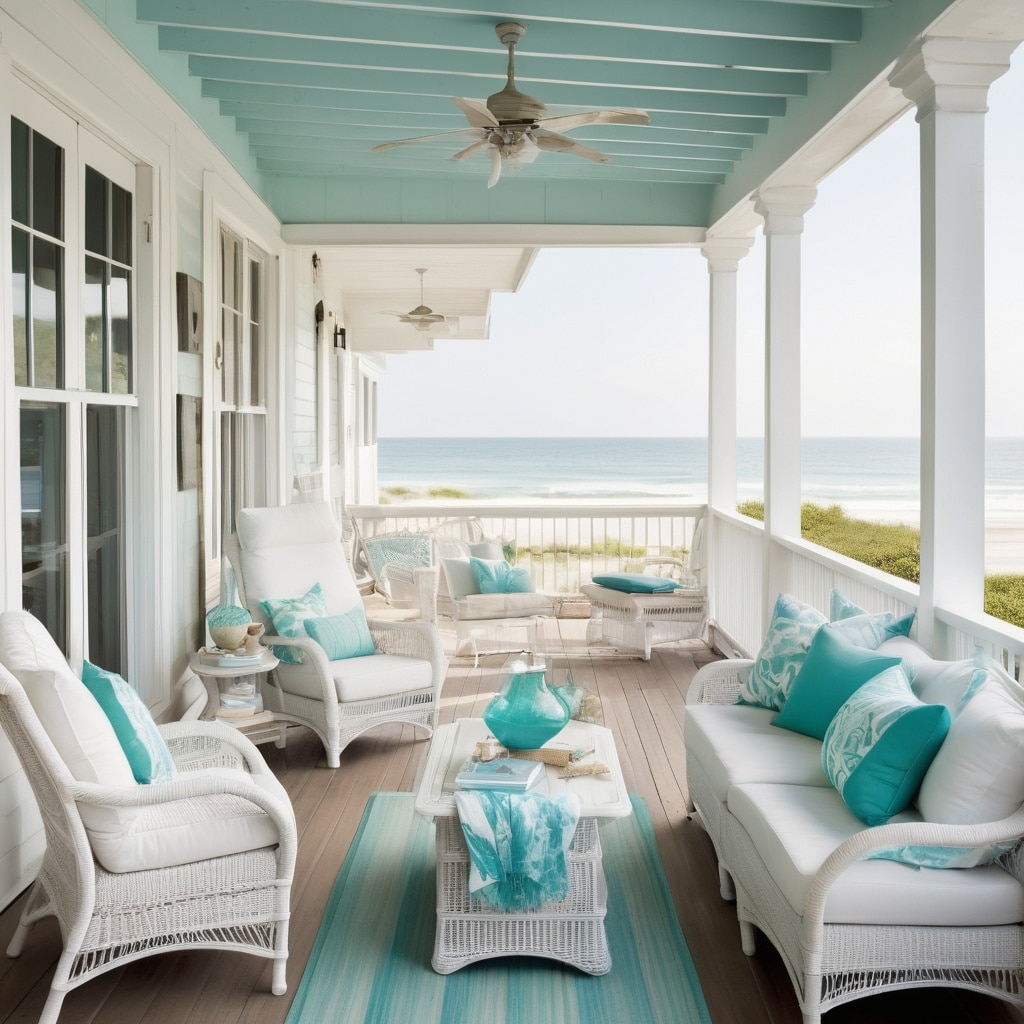
Dusky pinks paired with soft grays create romantically inclined bedrooms with sophisticated restraint. This color combination has transitioned from trend to modern classic, offering both intimacy and elegance.
“The evolution of pink in interior design has been fascinating to watch,” notes trend forecaster Charlotte Miller. “It’s moved beyond gender associations to become an adaptable neutral with emotional warmth—particularly when paired with grounding gray.”
This palette creates an ideal bedroom color scheme for couples—tranquil yet intimate, with balanced masculine and feminine energy. Choose a pale pink accent wall paired with a gray headboard and muted pink bedding to distribute color throughout the room.
For successfully romantic bedrooms:
- Choose sophisticated dusty pinks rather than bright or candy tones
- Balance with warm or cool grays depending on the room’s light exposure
- Incorporate natural elements like plants or wooden accents
- Add textural contrast through velvet, linen, and other varied fabrics
- Keep lighting warm and adjustable for changing moods
The result feels elegant yet approachable, creating a space that encourages both rest and connection. According to interior designers, this color combination consistently ranks among the most satisfying for shared bedrooms, with couples reporting high levels of mutual appreciation for the balanced aesthetic.
Aqua and Turquoise for Coastal Retreats
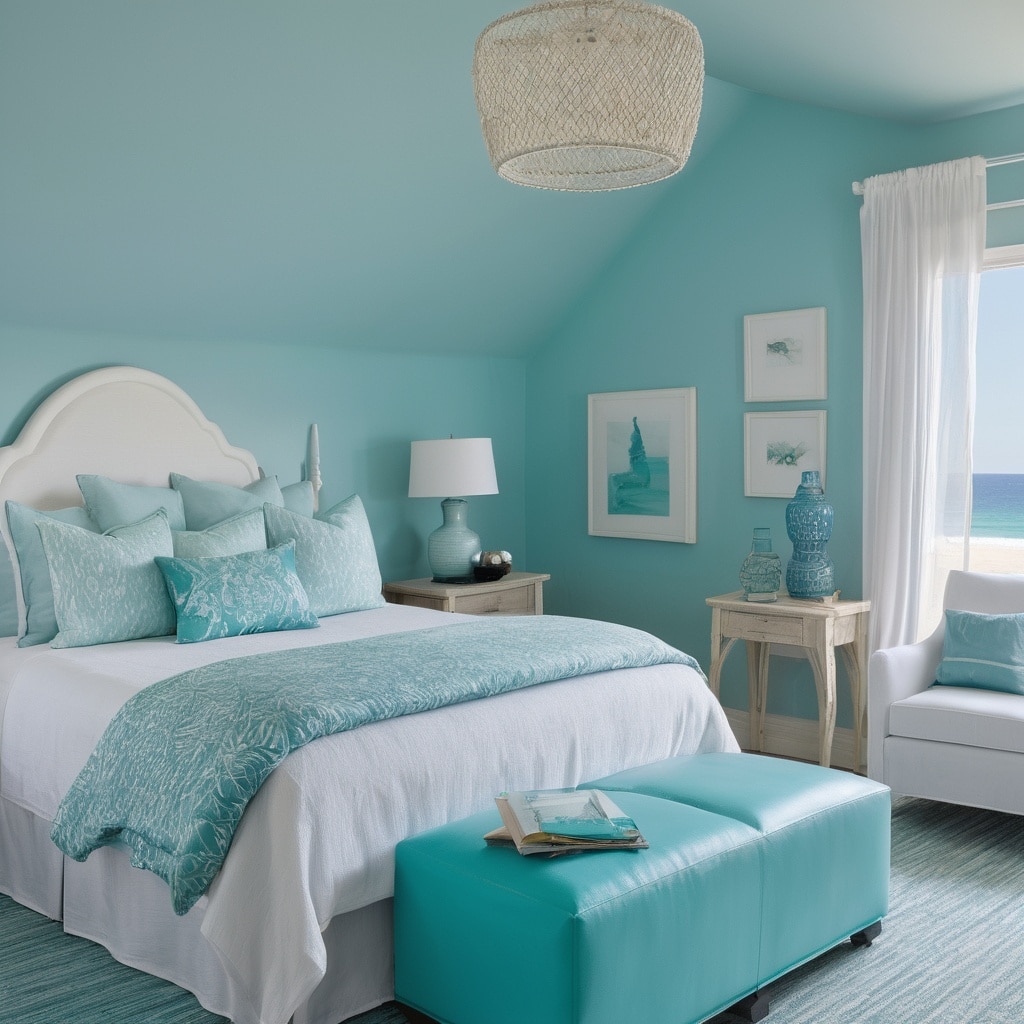
Aqua and turquoise colors create beautiful, beach-inspired bedrooms that evoke the relaxing qualities of water. These refreshing blue-green hues have been shown to lower blood pressure and respiratory rates, making them ideal for sleep environments.
“Water colors tap into our evolutionary connection to coastal environments,” explains environmental psychologist Dr. Ria Santos. “They signal safety and abundance at a subconscious level, creating immediate relaxation responses.”
For an authentic coastal bedroom that avoids clichés:
- Use aquamarine on walls or as a dominant color
- Incorporate sandy beige and soft white as complementary tones
- Add natural textures like rope, driftwood, and linen
- Keep furniture lines clean and unfussy
- Allow plenty of natural light whenever possible
This color scheme excels at bringing refreshing coastal energy into the home, creating spaces that feel like permanent vacations. The psychological benefits of blue-green colors make them particularly effective in bedrooms where stress reduction and relaxation are primary goals.
Designer Aaron Matthews suggests, “For landlocked homes, aqua and turquoise bedrooms can provide the psychological benefits of being near water—something we all instinctively crave but often can’t access daily.”
Conclusion
As you consider these 22 bedroom color schemes, remember that the most successful spaces reflect personal preferences and practical needs. Color is deeply subjective—what creates tranquility for one person might feel bland or boring to another.
Interior color expert Sophia Williams advises, “Always test colors in your actual space before committing. The same paint can look dramatically different depending on your specific lighting conditions, room orientation, and existing furnishings.”
For testing potential colors:
- Purchase sample pots and paint large swatches (at least 2 feet square)
- View them at different times of day
- Consider how they look with your existing furniture
- Pay attention to your emotional response to each option
- Take photos to review when you’re not in the space
The most important factor in creating your bedroom color scheme is how it makes you feel. Does entering the room give you a sense of relief and relaxation? Does waking up in the space energize you for the day ahead? These personal responses matter more than any trend or design rule.
By thoughtfully considering the psychological and aesthetic aspects of color, you can create a bedroom that truly serves as your personal sanctuary—a space that welcomes you home and supports your wellbeing every day.
